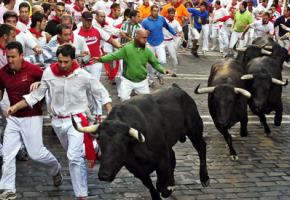Time it right
The island is busiest during school holidays, so you might want to plan your vacation outside of those dates: Avoid major calendar events like Christmas and Easter, and stick to home in the summer as well. For the best deals coupled with the warmest weather, aim for September or October. May is another month worth looking at. If beaching is your thing, January could be just slightly cool, with temperatures generally in the mid-60s F. You’ll rarely get rained out, as average monthly precipitation almost never reaches an inch.
Carnival season
If you visit just ahead of Easter, in February or March, you’ll hit the perfect mix of roomy hotels and local fun. The Lenten season welcomesCarnaval to Las Palmas, which translates to three weeks of outdoor partying and costumed revelers. Much of the action is centered around a giant outdoor stage in the Parque de Santa Catalina.
Marine life in autumn
The autumn off-season perfectly coincides with the island’s best diving conditions. Air and water temperatures are warm, but major weather systems are slinking off into their winter positions. Visibility under the sea is never better than in September and October. November sees the return of filefish and angel sharks, impressive species to check off your snorkeling to-see list.
Year-round landmarks
Year-round, Gran Canaraia has some gorgeous sites. The archipelago was created by volcanic activity, which is evident through the island’s black-sand beaches. The Dunes of Maspalomas are essentially a desert beside the sea, and Roque Nublo is always perched in the clouds above the island, surrounded by a landscape like that of the moon.
Gran Canaria is a place where off-peak pricing still offers on-peak experiences.
Image by El Coleccionista de Instant, used under the Creative Commons license.



















